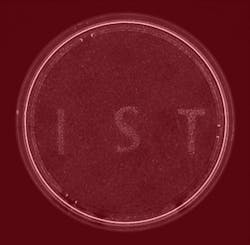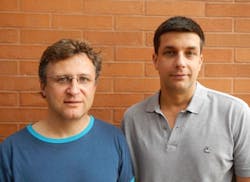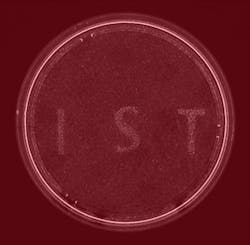Light now able to activate cell surface receptors, with promising implications
Knowing that to fully understand the dynamics of cellular signaling requires activating and inactivating membrane receptor proteins with high spatial precision, a team of researchers at the Institute of Science and Technology Austria (IST Austria; Klosterneuburg, Austria) and the Medical University of Vienna in Austria has re-engineered receptor tyrosine kinases (RTKs)—which are essential cell surface receptors that sense growth factors and hormones—to be under the control of light. The work has implications in optogenetics for cancer research, a technique that uses light to control cell activity.
Related: Quantitating multiple signaling pathway proteins in intact tissue
When a signaling molecule binds to RTKs at the cell surface, two receptors bind to each other in a process called dimerization, which then activates signaling in the cell. Harald Janovjak, an assistant professor at IST Austria, together with Michael Grusch, an associate professor at the Medical University of Vienna, and their research team linked those parts of mammalian RTKs that activate cell signaling to a light-oxygen-voltage-sensing domain, a reversible light sensor that they identified in a yellow-green alga. In the engineered receptors, the dimerization step and subsequently cell signaling can now be turned on and off by light as the algal proteins sense light and bind to each other. In cancer cells, activation of the engineered receptors causes changes in cell morphology, proliferation, and gene expression, characteristic of increased cancer malignancy. In blood cells, activation leads to cell sprouting, typical of the formation of new blood vessels.
The development of RTKs regulated through light-activated dimerization by Janovjak and Grusch is the first instance of light-activated dimerization of mammalian receptors. The engineered receptors can be precisely controlled by a light intensity easily achieved in microscopes and in animal models. The newly developed receptors trigger complex cellular programs in both cancer and blood endothelial cells. These cells represent new models in which behavior is under light control and can, for instance, be used for new methods to identify drugs. In contrast to cancer, where uncontrolled activation of cell signaling results in features linked to malignancy, light activation of signaling may rescue cell survival and function in degenerative disease.
Full details of the work are reported in the EMBO Journal; for more information, please visit http://dx.doi.org/10.15252/embj.201387695.
-----
Don't miss Strategies in Biophotonics, a conference and exhibition dedicated to development and commercialization of bio-optics and biophotonics technologies!
Follow us on Twitter, 'like' us on Facebook, and join our group on LinkedIn
Subscribe now to BioOptics World magazine; it's free!


